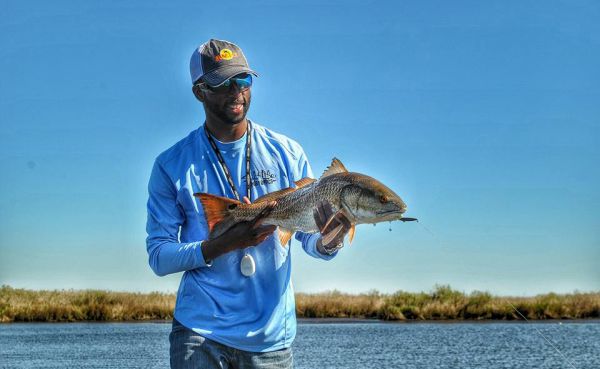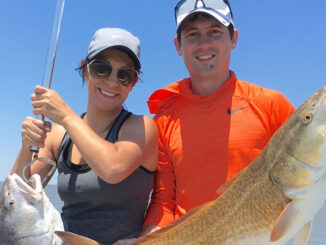
Small spaces can hold big fish
High-dollar powerboats are certainly nice for big water and they can handle waves, but they cost a lot of money.
Kalon Johnson, a college student, isn’t exactly flush with cash, so buying an expensive bay boat isn’t really an option.
That’s no problem for him because his Hobie kayak is oftentimes advantageous. He can get in skinnier water than powerboats, and at the end of the day his stop at Shell is only to fill up his truck.
Johnson fishes mainly in Pointe-aux-Chenes this time of year, and he has great success with a certain species.
“During the winter, I can find a lot of trout there, but once April comes, that’s parts of the transition period, so you can’t bet on finding trout out there via a kayak,” he said.
Instead, he targets redfish out of his kayak, a great mobility tool that allows him to get where powerboaters can’t go.
Johnson targets two types of areas when the water is leaving the marsh.
“I like to fish ponds and flats on a falling tide,” he said. “The flats are open areas with shallow water and grass.
“I like the falling tide. I do a lot of sight-fishing, and the sight-fishing is easier to do whenever the tide is falling. When the tide is rising and the water is high, those redfish tend to scatter. You have to go farther back into the marsh, which makes them hard to access.”
Johnson sight-fishes in the ponds, but he doesn’t just mosey into the pond.
“A lot of people like to hug the bank, but what I do is get in the middle and look for the redfish that are cruising around looking for bait,” he said. “It’s going to be shallow, so you can see them easily.”
There is an infinite amount of ponds and backwaters across the coast, making for a lot of viable options for redfish.
Knowing what to look for in the ponds will help anglers eliminate dead water and spend more time in productive ponds.
“The key ingredients for sight-fishing reds are clean water, grass and bait,” Johnson said. “Those redfish can get in the grass and ambush the bait.”
Johnson said the second of those ingredients makes it possible to sight-fish effectively in subpar water clarity.
“I find that I can still sight-fish in murky water, as long as you still have grass in it,” he said.
Another key to Johnson’s success is using polarized sunglasses. He prefers Salt Life Optics’ line, and said the specs of the glasses are important.
“As long as they have amber- or copper-tinted lenses, you can use them to sight-fish anywhere in Louisiana,” he said.
Once he’s in the ponds, Johnson throws a litany of baits depending on the water level.
“If you have a good bit of water and you can swim that bait on top of the grass, then I’ll go with a Matrix Shad on a jighead,” he said. “If the water is low and you have a good amount of grass, you can go with an Aqua Dream Spoon or a weedless hook.”
Attached to those weedless hooks, Johnson Texas-rigs a bait that most people don’t think of for saltwater fishing — but it’s deadly effective.
“A crawfish bait works really well because it imitates a small crab,” he said.
Johnson stands up in his kayak, and he feels it helps because he is elevated and able to see better into the water.
“The only time I sit down in my kayak is when I’m going to a different location,” he said.
As far as equipment, the angler uses medium-power 13 Fishing rods, Fins braided line and a 7.1.1 gear-ratio reel.
Johnson said the fast gear-ratio reel helps him be efficient.
“When I’m sight-fishing and the fish doesn’t bite on that cast, I can reel in and hurry up to make another cast,” he said.
He adjusts his line size according to the grass in the area.
“The thicker the grass, the heavier the line you want to use,” Johnson said.
He usually goes with 20- or 30-pound braided line.


